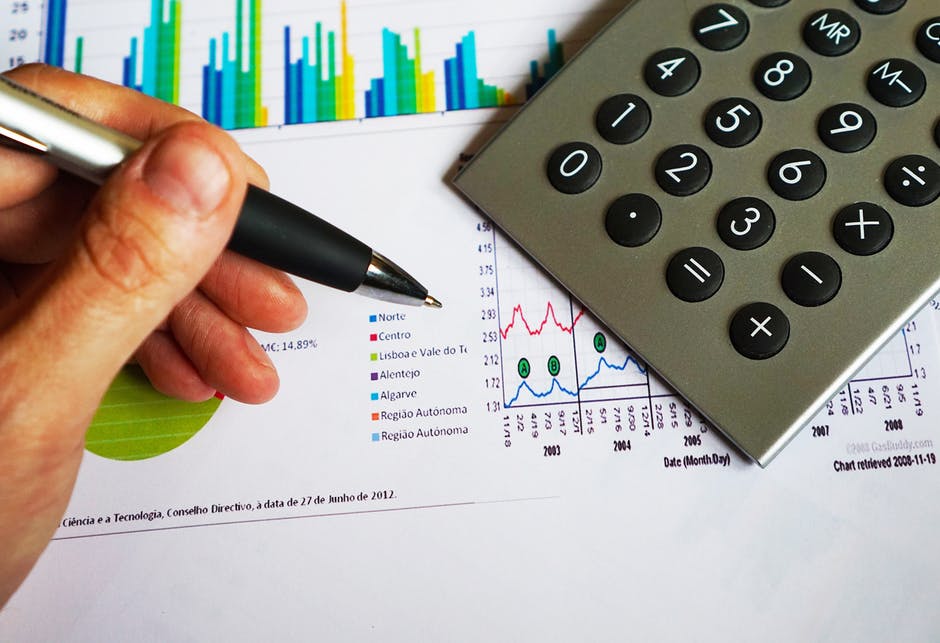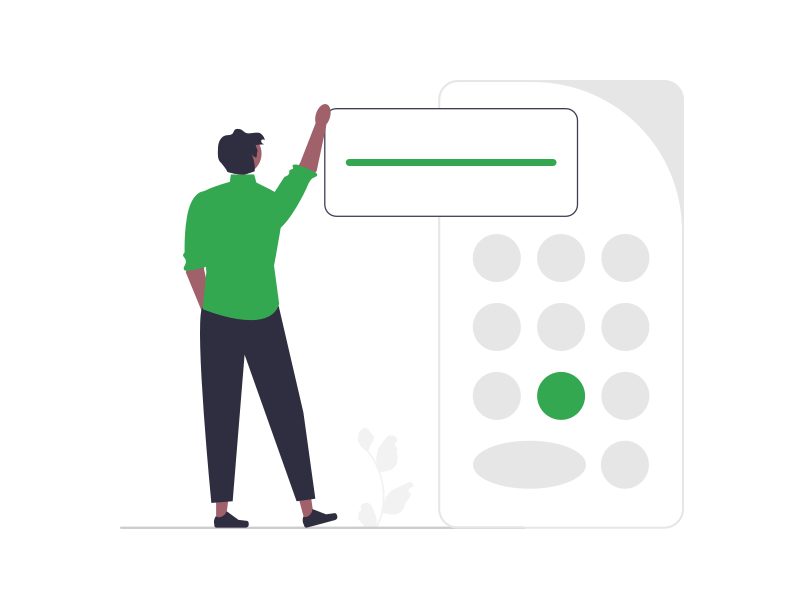Sydney holds one of the leading install rates for solar power across the world. In fact, in certain suburbs of Sydney (such as Schofields), the data from the Australian Photovoltaic Institute shows that over 70% of the rooftops have a solar panel installation. This article aims to look at the investment case for solar and provides a guide on how to make a decision on solar panels in Sydney.
If you’re interested in solar power for your Sydney-based business, see our article on Commercial Solar Panels Sydney.
How much power do solar panels generate in Sydney?
Although it may not be as sunny as Brisbane or Darwin, Sydney still receives plenty of sun hours. With NREL’s PVWatts calculator, we can see that for each kWh that is installed in Sydney, you should be able to generate an average of 3.96 kWh per day. This factors in a system efficiency loss of 15% which would be typical of a reasonable quality Sydney solar system.
We’ve put together the below table of common system sizes to help you understand what this means. It’s helpful to remember that kilowatt-hours (kWh) are the units that appear on your electricity bill – and which your electricity retailer uses to calculate your quarterly or monthly electricity charges.
Estimated power production for solar panels Sydney | ||
| Solar system size (kilowatts) | Avg daily system output (kilowatt-hours) | Annual output (kilowatt-hours) |
| 3kW | 11.9 kWh | 4,336 kWh |
| 4kW | 15.8 kWh | 5,782 kWh |
| 5kW | 19.8 kWh | 7,227 kWh |
| 7kW | 27.7 kWh | 10,118 kWh |
| 10kW | 39.6 kWh | 14,454 kWh |
| 15kW | 59.4 kWh | 21,681 kWh |
* Output was calculated using PVsyst software
What do these numbers mean for me if I go solar?
Solar power is a great investment for virtually any home that has a reasonably-sized, unshaded roof and some electricity consumption during daylight hours (see the sections below). This is because your home-generated solar energy can save you money in two ways:
- Solar helps you reduce the amount of energy you need to purchase from your electricity retailer / the grid. This is commonly referred to as ‘solar self-consumption‘, and it is the key to making the most of your solar system – you should do everything you can to maximise your self-consumption. In practice, self-consumption entails running your appliances (pool pump, washing machine, dishwasher, etc) when the sun is shining. (Read more about shiftable loads.)
- You can earn credits on your electricity bill for your system’s surplus energy. This is usually referred to as a solar feed-in tariff. Any solar energy produced that is not immediately put to use in devices in your home will automatically be sent back to the grid, earning you a feed-in credit. A few years ago, feed-in tariffs were state-sponsored and quite generous; these days the rates offered are a bit lower but still enough to help make solar an attractive investment.
The value of your solar energy is based on a combination of how much you self-consume and how much you export. If you have 6.6kW of solar panels in Syndey that produce an average of 26.1kWh/day, but you only manage to self-consume 20% of that, then your savings will be smaller than if you managed to self-consume 40% – or even, ideally, 60%.
It’s therefore important that the system you choose is appropriately sized for your home and electricity consumption. We have developed a tool to help you select a solar PV system size based on the amount of energy that you consume and your consumption pattern.
Compare quotes from 7 installers in Sydney now.
What rebates are available for solar panels Sydney
Federal STC Rebate
Like everyone everywhere in Australia, Sydney residents who install solar can benefit from the nation’s small-scale technology certificate (STC) rebate under the Renewable Energy Target. In simple terms, the STC rebate offers an upfront discount of approximately 30% for any solar installation under 100kW in capacity in Australia. The rebate does differ slightly depending on your location in Australia and on the current market price for the certificates it produces.
The rebate is designed to be collected by the company that installs your solar system, so they in turn offer you a net price that has deducted the STC rebate. Most quotes will provide a breakdown of the total costs (before the rebate) and the net cost to you (after the rebate).
To give you an example, a typical 6.6kW solar panel system in Sydney would generate 82 STCs (using the Clean Energy Regulator’s calculator) at a current price of $36.9 per certificate which would result in a rebate of $3,026.
NSW Government interest-free loans for batteries
The NSW government has introduced a program to provide interest-free loans to customers installing a battery. The scheme is only available to residents who are in one of the postcodes listed on this page, mostly covering the Hunter Valley and Blue Mountains areas.
We provide some information on the financial return of solar batteries further down this article, however, in our view at Solar Choice an interest-free loan is not sufficient to change the economic story of installing a battery.
How much do solar panels cost in Sydney?
Thanks in part to the federal incentives explained above, Australia is home to some of the lowest solar PV system prices in the world – which is one of the reasons that so many homes and businesses have solar panels installed. Solar Choice has been keeping track of installation price trends since 2012 and as you can see in the below table the cost of solar in Sydney tracks closely to the national average.
The chart below shows how prices have changed (in terms of dollars per watt of capacity – $/W) since 2012 for a range of popular system sizes. On average solar system prices in Sydney have more than halved since we started publishing figures.
According to our data from July 2023, a typical 6kW system in Sydney costs about $5,140 on average after the STC rebate has been deducted.
Pricing will vary depending on if any additional costs are involved like tile roof installations or tilt frames. Solar Choice’s online quote comparison tool includes a comparison of all of these extra costs which might apply to your home.
Compare solar quotes from up to 7 local installers now.
What is the financial return for a solar panels Sydney customers?

The short answer is that there is a great return on investment for Sydney homes with the ability to save up to $2,707 per year on your energy bill with a typical payback period between 4 and 5 years.
The table below shows payback periods and annual savings in the first year for a Sydney solar panel system for several different scenarios. Note that we have attempted to match the system size to the energy usage, however, the right size system also depends on what time of day energy is used within a home. The self-consumption rate of 40% means that a reasonable amount of power is being used in the middle of the day.
As we’ve used average prices from the Solar Choice Price Index, the financial return could be better for you if you can find a cheaper quote. Although be wary of quotes that are too cheap as workmanship, sales, installation process and quality of products can drop away very quickly.
| Indicative savings and payback periods for solar panel systems in Sydney – Updated July 2023 – | |||||
| Solar Panel Size | Average Cost | Average Daily Energy Usage | Self Consumption Rate | Annual Savings | Payback Period |
| 5kW | $4,750 | 15 kWh | 40% | $968 | 4.8 Years |
| 6.6kW | $5,140 | 20 kWh | 40% | $1,285 | 3.9 Years |
| 10kW | $8,570 | 30 kWh | 40% | $1,936 | 4.3 Years |
| 15kW | $15,450 | 45 kWh | 40% | $2,903 | 5.2 Years |
Assumptions/limitations of this analysis
- Assumes an electricity price of 29c / kWh which is towards the middle of what is offered in Sydney
- Assumes an uncapped solar feed in tariff of 7c / kWh which on the better end of what you can find in Sydney
- Average costs come from the Solar Choice Price Index for July 2023
- Your self-consumption rate will vary depending on how you use power in your home. A higher rate, means less power is exported to the grid and improves your financial return
Use our calculator to work out the return for your own specific details in Sydney

What about solar battery storage in Sydney?
The cost of solar batteries in Sydney is much higher than the cost of installing solar panels. Although the battery functionality has been well established and there are different brands in the market, the return on investment still leaves something to be desired.
At Solar Choice, we have been tracking the costs of solar batteries in the battery price index and regularly performing an assessment of the financial return of batteries. We look at 3 typical use cases for solar batteries and adjust the size of the solar and battery solution to fit. See the below payback periods and annual savings from solar and batteries in Sydney.
| User Case | Solar and Battery Solution | Total Year 1 Savings | Payback Period Solar & Battery | Payback Period Battery Only |
| Young Adults / Older Family | 5kW of Solar Panels and a 3.5 kWh battery | $1,233 | 8.3 years | > 20 years |
| Retirees / Young families | 6.6kW of Solar Panels and a 6.5 kWh battery | $1,948 | 7.1 years | 17.7 years |
| Big Energy User | 13 kW of Solar Panels and a 13.5 kWh battery | $3,638 | 7.1 years | 14.4 years |
To review our assumptions and the methodology of this analysis see our full article.
As most batteries have a warranty for 10 years, our analysis suggests that the battery will not be able to pay for itself during its lifetime. There is still quite a way to go on the cost of batteries before this story will change. Previously we have estimated that batteries will need to cost $200-$300 per kWh of capacity to offer a good return on investment while the current price is around $1,000 to $1,100 per kWh.
This analysis does ignore some of the non-financial benefits of batteries. Crucially as Australia is experiencing higher frequencies of flooding and more severe bushfires, many households are attracted to batteries to provide back-up power in the instance of the grid outage.
There is also the benefit to the environment to assist in the reduction in Australia’s reliance of coal-fired power stations. Batteries, and many of them, will be required if we are going to eliminate fossil fuel power in Australia altogether.
Compare quotes from up to 7 pre-vetted installers in your area now.
Since 2008 our knowledge and sophisticated software has allowed over 160,000 Australian households and businesses to make a well-informed choice on their solar & battery installer.
FAQs
How many houses have solar panels in Sydney?
What direction should solar panels face in Sydney?
Is solar worth it in Sydney?
How many solar panels do I need in Sydney?
- Tesla Wall Charger (Gen 3): An Independent EV Charger Review by Solar Choice - 16 April, 2024
- Compare Solar Feed-in Tariffs – State by State - 12 April, 2024
- Which electricity retailer offers the best solar feed-in tariff? - 12 April, 2024

G’Day, could you please explain for me the following : 2.5kw solar x 10 panels system + inverter conected to grid. Does that mean the total number of panels (10 ) produces 2.5kw of power or is each panel 2.5kw = 25 kw power? I don’t have a clue re this. Cheers Marian.
Hi Marian,
In this scenario, each panel would be 250 watts (W). 1 kilowatt (kW) is equal to 1,000 watts, so 10x 250W solar panels would equal 2,500W or 2.5kW.
Hope this helps.
Am a Carpenter and would like to know the best roof pitch facing north that would give me optimal usage for a new system of panels.
Thanking You
TonyMc
Hi Tony,
Best practice for a standard grid-connected solar system is to tilt the panels in accordance to the latitude of the location of the roof (e.g. 32 degrees for Sydney). For homes or businesses with heavy summertime cooling loads, the panels can be tilted at latitude minus 10 degrees (e.g. 22 degrees for Sydney). Conversely, for homes with heavy electrical loads in winter, panels can be tilted at latitude plus 10-15 degrees (e.g. 42-47 degrees for Sydney).
Hope you find this useful! You may also want to check out our article on solar panel tilt & orientation.
I dont understand why so many People dont have Solar . The Sun is over there more then in Europe!
Does Solor heating for a pool get the government discount
Hi Leonard. If you’re talking about a solar hot water system, then the answer is yes – both solar photovoltaic and solar hot water systems are eligible for the federal incentive available under the Renewable Energy Target.
What I find frustrating is the choke hold current energy produces seem to have over solar buyback systems. Surely if more homes could afford solar technology, and the power channeled back into a grid, we could begin to create a sustainable eco-friendly future.
We are so behind the rest of the world in solar and we should NOT be in this position. Professor Martin Green did so much of the early pioneering work on this innovation in the 80’s and 90’s and we have NOT utilised this value adding of the sun. In places like Israel and Jordon, most have solar powered homes and they get snow in winter!
Why can’t we get a government that pushes along this technology to improve the more than 16% unemployment rate we have in Australia?
Barbara, you are spot on. Australia is one of the sunniest countries in the world and we should be leaders with solar energy. Germany which receives nowhere near the sunshine that we have is killing us in solar production. You can blame our Liberal governments over the years starting with Howard. They are wedded to the fossil fuels and “Coal Is King” as far as they are concerned. Just look at the Turnbull as he pumps up the Adani / Carmichael mega coalmine. It is insane on every level.
There is not enough sun on my home to install solar power but I want to explore the feasability of running my pool pump only by solar. There is an area on my site which may have enough sun so I need advice.
David
Hi David. Solar-powered pool pumping should indeed be an option for you as long as you have space outside your roof to mount solar panels. Best to get in touch with one of our brokers on the topic by either emailing sales@solarchoice.net.au or filling out our Solar Quote Comparison Request form to the right of the page.